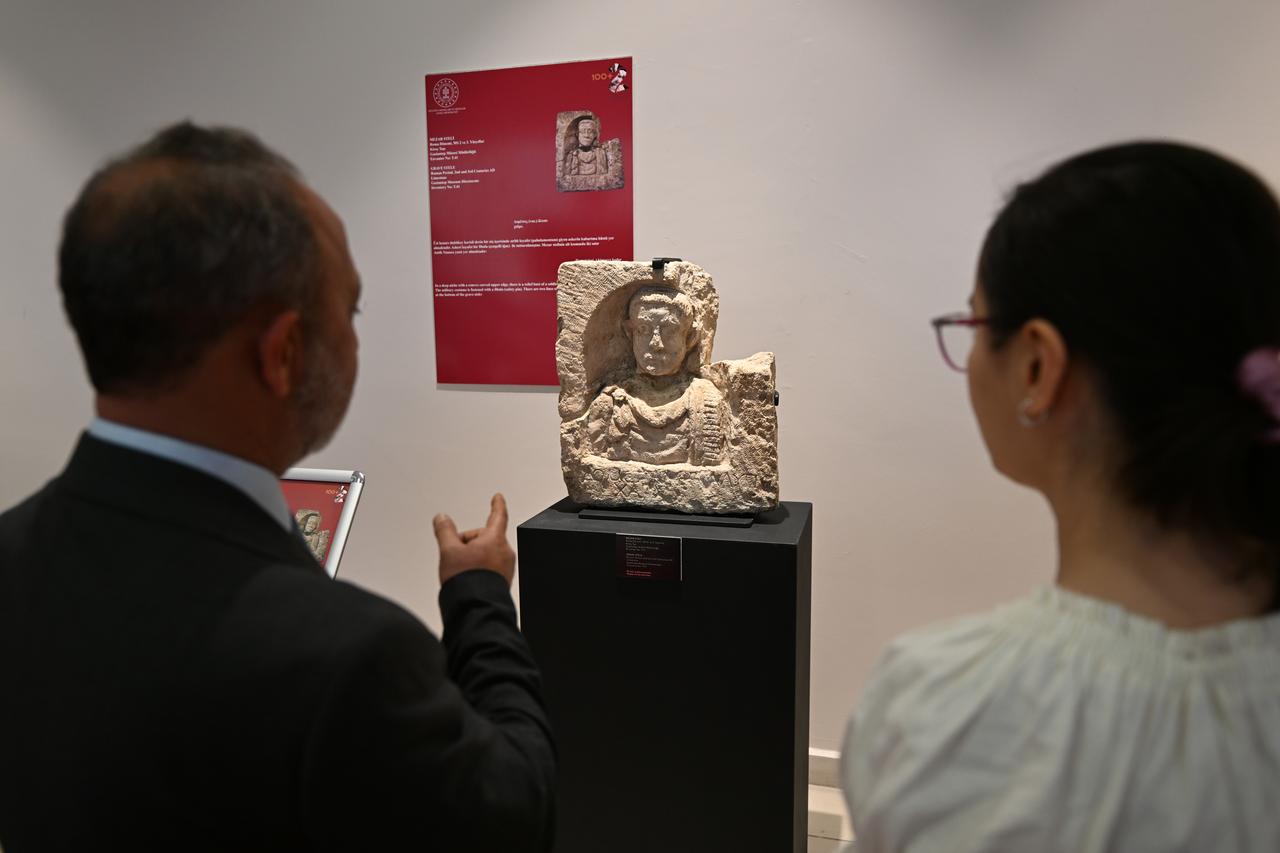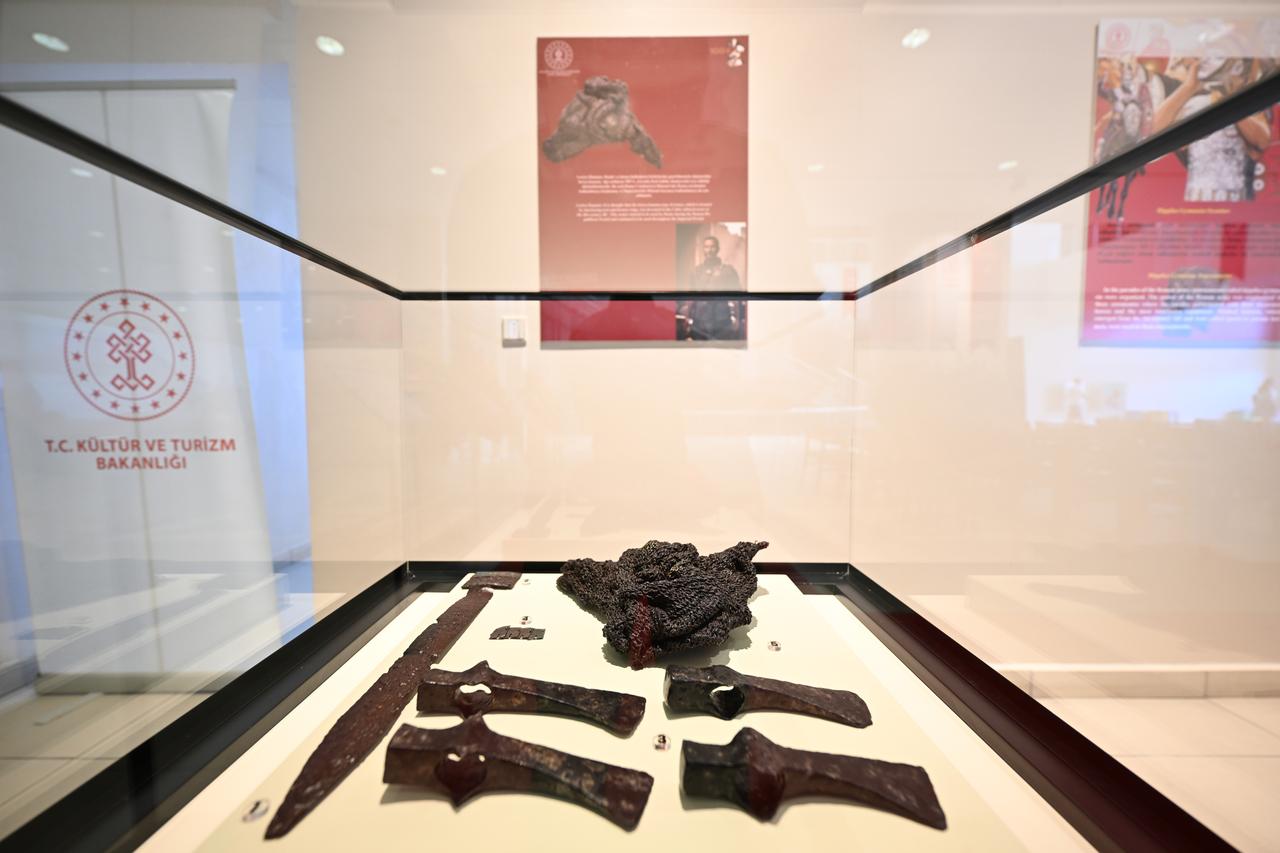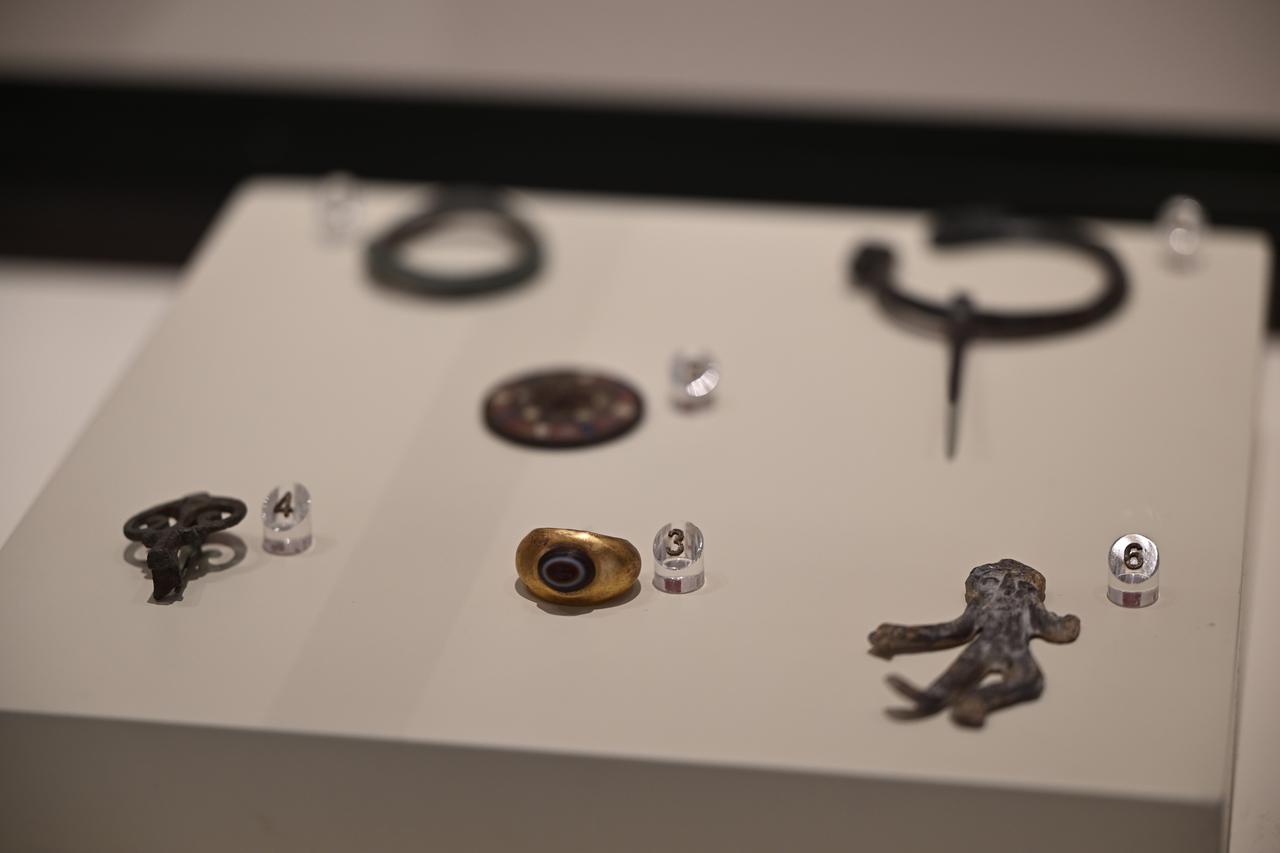
In celebration of the 102nd anniversary of the Republic of Türkiye, a significant exhibition titled "Zeugma IV. Scythica Legion" was inaugurated at the Zeugma Mosaic Museum in Gaziantep.
The exhibition is part of the nationwide theme, "102 Exhibitions for the 102nd Year: A Journey into Anatolia’s Cultural Heritage in the Light of the Republic."
The spotlight of the exhibition falls on a newly discovered Mithras relief, presented for the first time to the public alongside 32 other artifacts unearthed from the ancient city of Zeugma.

The centerpiece of the exhibition is a marble relief depicting the god Mithras—an exceptional archaeological find that could indicate the existence of a mithraeum (a sanctuary dedicated to the god Mithras) within the legionary settlement of Zeugma.
Despite the lack of previous concrete archaeological or epigraphic evidence, scholars have long speculated on the presence of a mithraeum in Zeugma due to the city's historical and military ties with Dura-Europos, another key Roman garrison city known to house a mithraeum.
In 2015, a carved marble slab measuring 33.5 x 38.3 cm was discovered near the At Meydani area, believed to be part of the military zone in ancient Zeugma. The relief, sculpted from bluish-beige/white fine-grained marble, shows Mithras in his classic tauroctony pose, slaying a bull. A nimbus (halo) crowns his head, signifying divine light, possibly derived from the god Sol.
The corners of the relief feature stylized depictions of Helios (Sun) and Selene (Moon), while the torchbearers Cautes and Cautopates stand on either side of Mithras. Above, seven altars are depicted—three positioned symbolically between two tree trunks, as seen in Mithraic iconography.
Traces of red pigment remain on the figures' clothing, flames, and bull wounds, adding vividness to the scene.
This relief is not only the first Mithras-related artifact found in Zeugma but also suggests the likely location of a mithraeum near the site of its discovery—possibly mirroring the architectural context seen in Dura-Europos.

Speaking at the opening ceremony, Gaziantep Museum Director Ozgur Comak emphasized the broader significance of Zeugma: “Zeugma is not only known for its famous mosaics; it is also a major Roman legionary city.
This exhibition helps highlight the military aspect of its history. The 33 newly presented artifacts are being displayed for the first time, which makes this exhibition truly unique.”

Organized under the leadership of the Ministry of Culture and Tourism's Directorate General of Cultural Heritage and Museums and curated by the Gaziantep Museum Directorate, the exhibition has already drawn considerable interest from art and history enthusiasts.